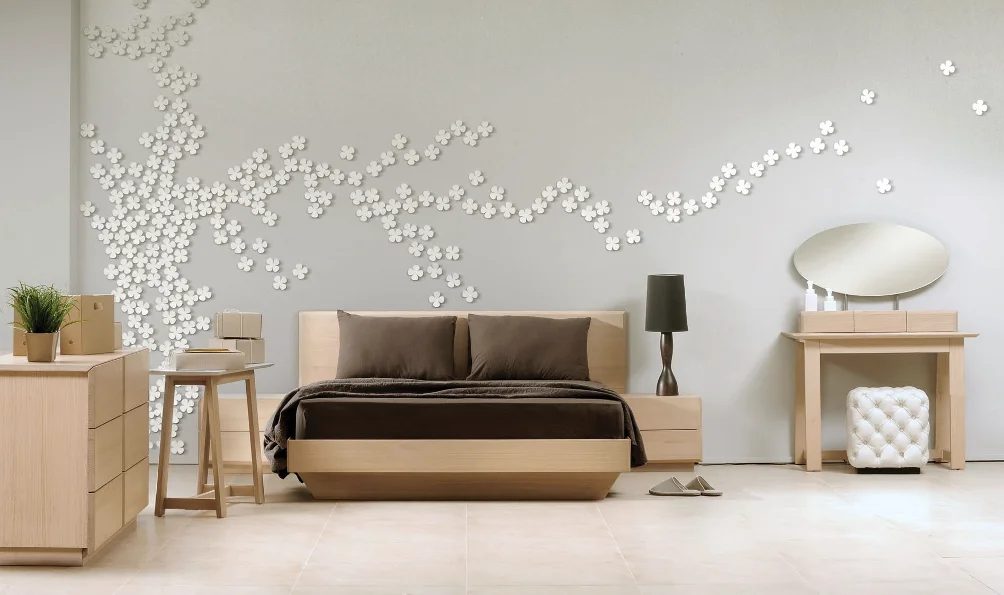The art of Korean interior design has transcended geographical boundaries, captivating homeowners worldwide with its harmonious blend of functionality and aesthetic appeal.
Korean bedrooms, in particular, exemplify the quintessential balance between contemporary minimalism and traditional Asian elements, creating spaces that are both restorative and visually striking.
The paradigm of Korean bedroom design emphasizes clean lines, natural materials, and a profound connection to cultural heritage, making it an increasingly popular choice for those seeking to create a tranquil sanctuary within their homes.
As we delve into these 12 Korean bedroom ideas, you’ll discover how this design philosophy can transform your personal space into a haven of serenity and sophistication.
Korean Bedroom Ideas
Whether you’re drawn to the understated elegance of traditional Korean elements or the sleek modernity of contemporary Asian design, these ideas will guide you in crafting a bedroom that reflects both style and substance, while maintaining the authentic essence of Korean interior aesthetics.
1. Traditional Hanok-Inspired Elements
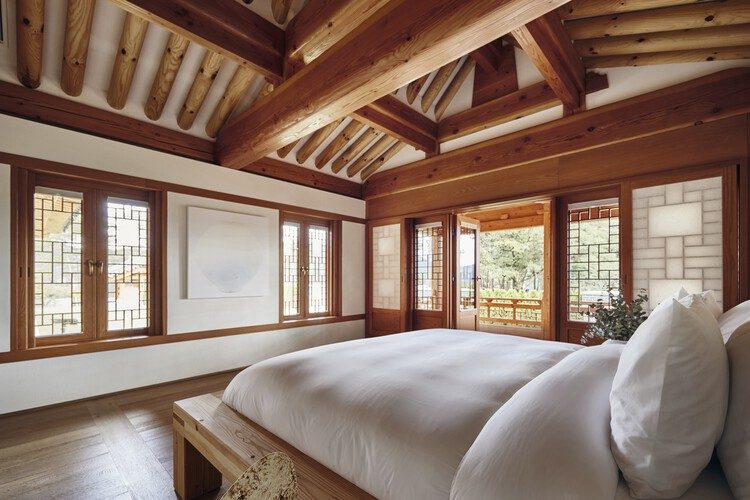
The incorporation of Hanok-inspired elements brings the essence of traditional Korean architecture into modern bedrooms. The key lies in utilizing natural materials like wood and paper, particularly in window treatments and room dividers. This design approach often features exposed wooden beams and traditional paper screens, known as hanji, which filter natural light beautifully throughout the space.
The beauty of Hanok-inspired design extends to the choice of furniture as well. Low-profile beds, reminiscent of traditional Korean floor mattresses, create an authentic atmosphere while maintaining modern comfort. These elements can be complemented with contemporary touches like subtle LED lighting or modern storage solutions, creating a perfect blend of old and new.
2. Neutral Color Palette with Natural Accents
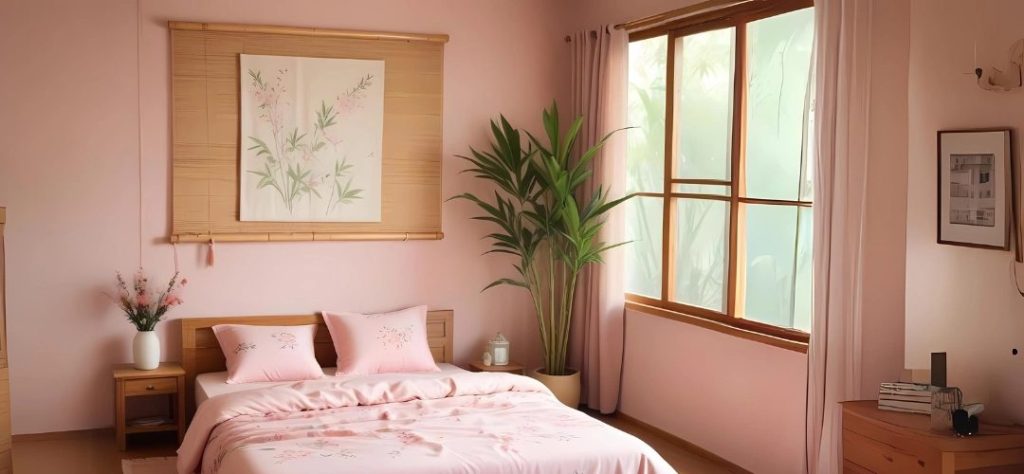
Korean bedroom design often revolves around a sophisticated neutral color scheme that promotes tranquility and balance. The foundation typically consists of whites, beiges, and soft grays, creating a canvas that’s both timeless and versatile. These neutral tones are often punctuated with natural accents like deep browns from wooden furniture or soft greens from carefully placed plants.
This color philosophy extends beyond just wall colors and furniture choices. Bedding, window treatments, and decorative elements all work together in harmony, creating layers of texture within the neutral palette. The result is a space that feels both cohesive and intrinsically calming, without appearing monotonous or bland.
Related Guide: 14 Cozy Autumn Bedroom Ideas
3. Minimalist Furniture Arrangements
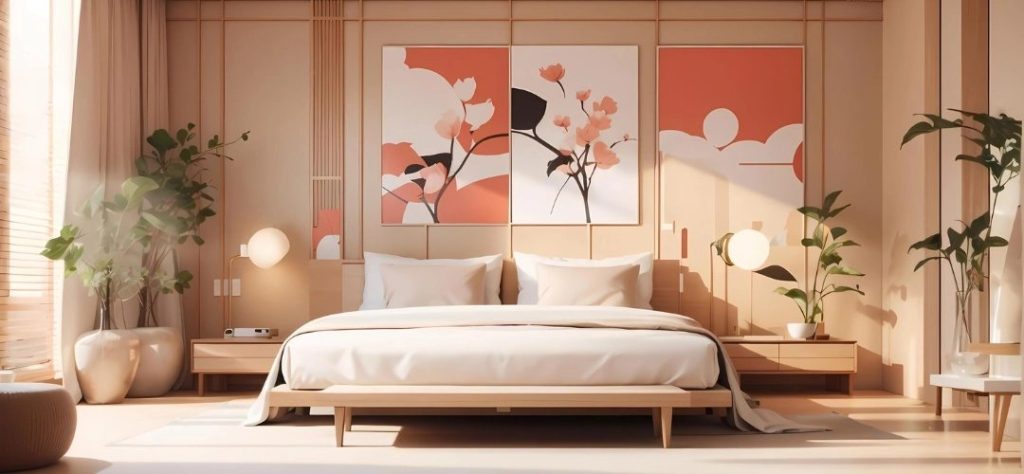
The Korean approach to bedroom furniture arrangement emphasizes the principle of “less is more.” Each piece is carefully selected for both its functionality and aesthetic contribution to the space. The bed typically serves as the focal point, often positioned against a simple yet elegant feature wall, while other furniture pieces are chosen for their essential purpose rather than decorative value.
Storage solutions are integrated seamlessly into the design, with built-in closets and hidden compartments maintaining the room’s clean lines. This minimalist approach extends to nightstands and dressers, which often feature simple, geometric designs that complement rather than compete with the overall aesthetic.
4. Floor-Level Living Concepts
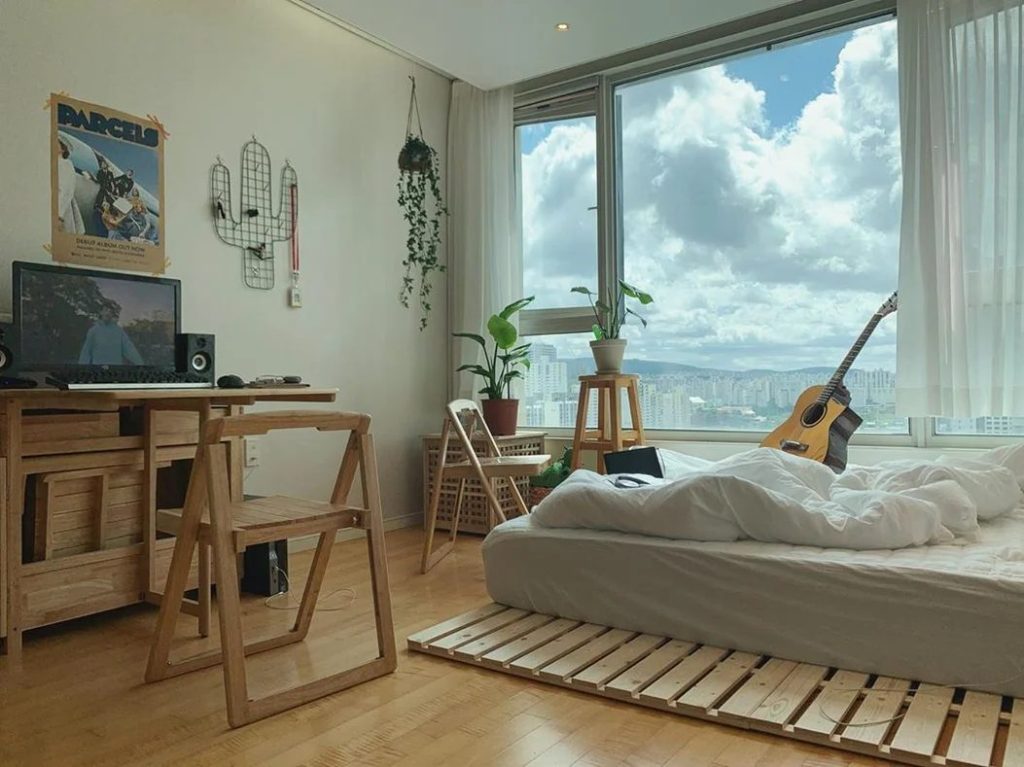
Traditional Korean design often emphasizes floor-level living, and this concept translates beautifully into modern bedroom design. Platform beds set low to the ground create an authentic Korean atmosphere while providing a contemporary sleeping solution. These platforms often incorporate storage drawers or compartments, maximizing functionality without compromising style.
The floor-level concept extends beyond just the bed, with low-profile furniture and floor cushions creating multiple functional zones within the space. This approach not only honors traditional Korean living practices but also creates an illusion of more space and promotes a more grounded, peaceful atmosphere.
5. Natural Light and Paper Screens
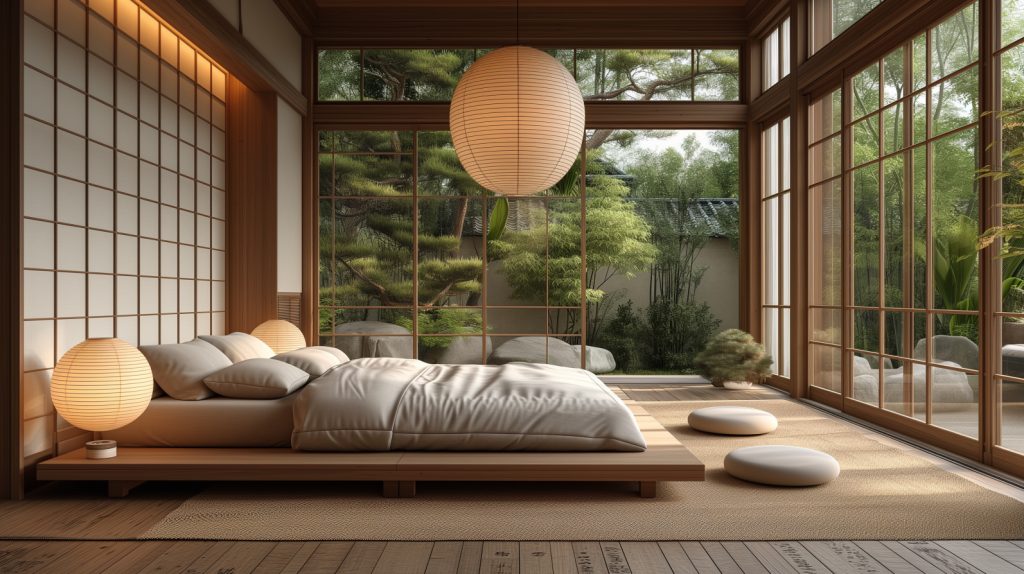
Light plays a crucial role in Korean bedroom design, with an emphasis on maximizing natural illumination. Traditional paper screens, or modern interpretations thereof, are used to filter sunlight, creating soft, diffused lighting throughout the space. These screens can be adjustable, allowing for privacy while maintaining the room’s connection to natural light.
Window treatments are carefully selected to complement this lighting philosophy, often featuring lightweight, natural materials that can be easily adjusted to control light levels throughout the day. The interplay of light and shadow becomes an integral part of the room’s design, creating dynamic visual interest that changes throughout the day.
6. Integration of Nature Elements
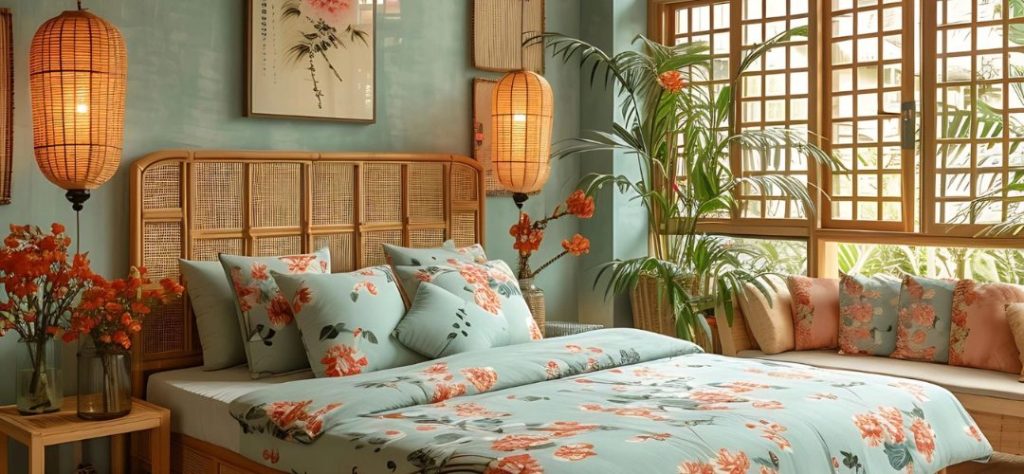
Korean bedroom design places significant emphasis on bringing natural elements indoors. This connection to nature is achieved through carefully selected indoor plants, natural materials, and organic textures. Potted bamboo, small bonsai trees, or other low-maintenance plants are strategically placed to create focal points and add life to the space.
The natural theme continues in the choice of materials for furniture and accessories. Stone, wood, and natural fibers are prominently featured, creating a subtle link to the outdoor environment. These elements work together to create a calming atmosphere that promotes rest and relaxation.
7. Modern Technology Integration
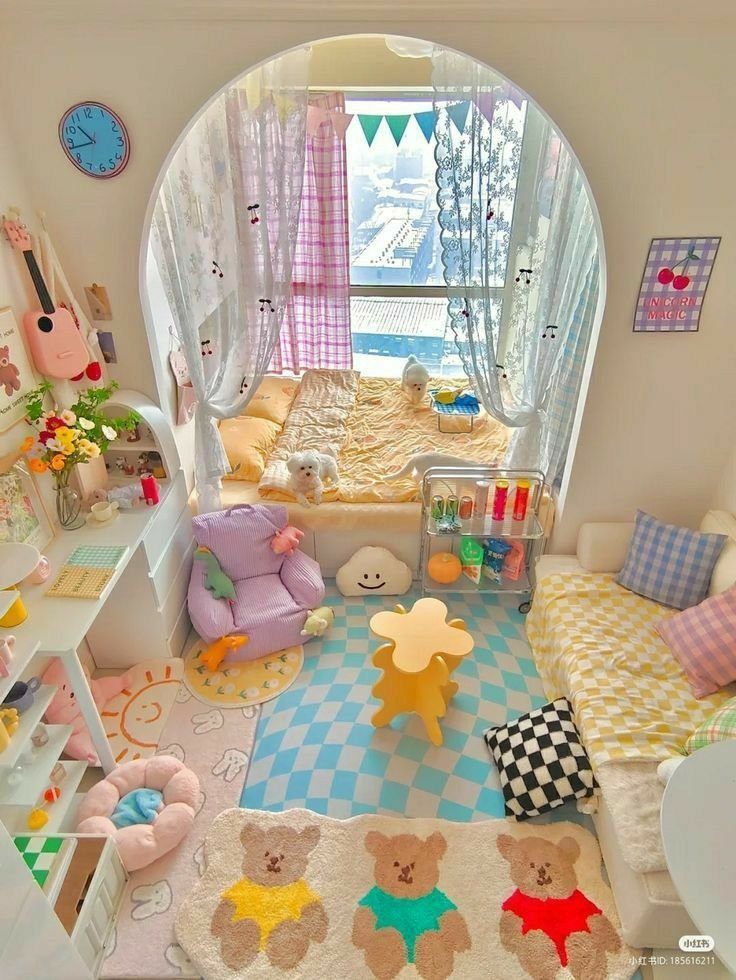
While respecting traditional design elements, Korean bedrooms often incorporate modern technology in subtle and sophisticated ways. Entertainment systems are typically hidden behind sliding panels or contained within minimalist furniture pieces. Smart lighting systems are integrated seamlessly, allowing for customizable ambiance without visible wiring or controls.
The key to successful technology integration lies in maintaining the room’s serene atmosphere while providing modern conveniences. Cable management solutions and wireless charging stations are thoughtfully incorporated into furniture designs, ensuring that technology enhances rather than disrupts the space.
8. Traditional Art and Calligraphy
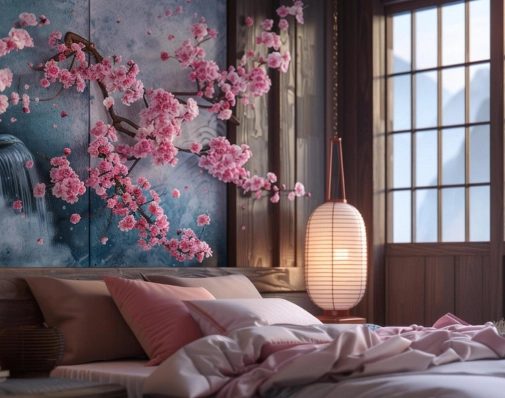
Korean bedrooms often feature carefully selected artwork and calligraphy that add cultural depth to the space. Traditional paintings or modern interpretations of Korean art are displayed in simple frames, creating focal points that complement rather than overwhelm the room’s design. These artistic elements often depict natural scenes or incorporate traditional Korean motifs.
The placement of artwork is carefully considered, with pieces typically positioned to be visible from the bed or upon entering the room. The scale and composition of these pieces are chosen to maintain the room’s balance while adding visual interest and cultural significance.
9. Textile and Pattern Usage
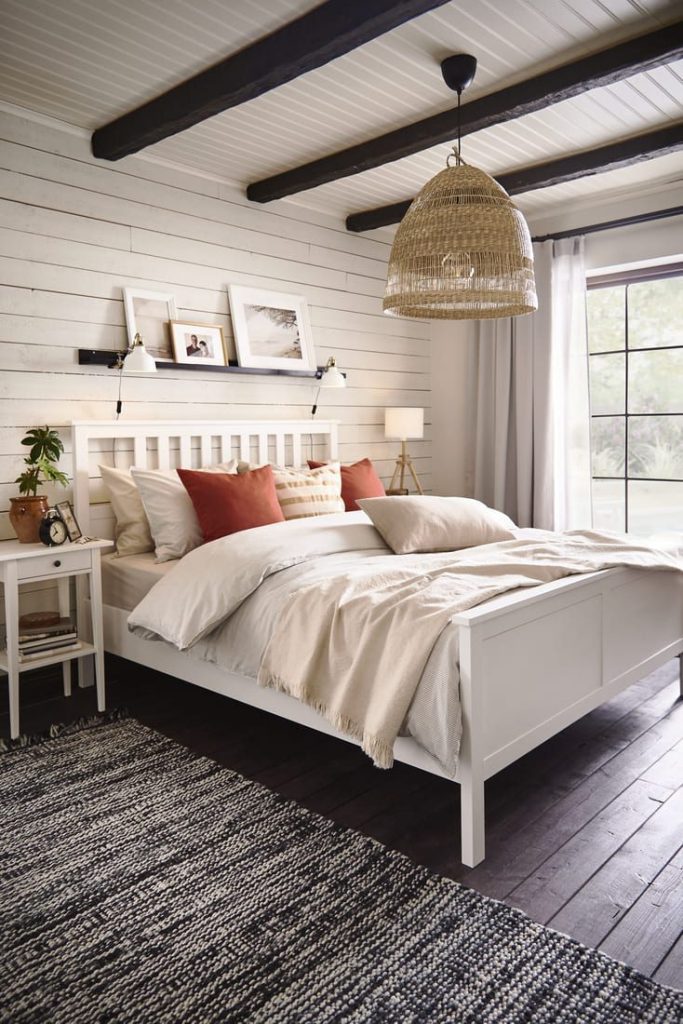
While maintaining minimalist principles, Korean bedroom design incorporates carefully selected textiles and patterns that add depth and interest to the space. Traditional patterns might appear in bedding, cushions, or window treatments, while maintaining a subtle and sophisticated appearance. These patterns often draw inspiration from nature or geometric forms found in traditional Korean design.
The layering of textures is equally important, with smooth silks contrasting with rougher natural fibers, creating tactile interest without visual clutter. This thoughtful combination of patterns and textures adds warmth and personality to the space while maintaining its serene atmosphere.
Related Guide: 16 Stunning Kawaii Bedroom Ideas
10. Storage Solutions
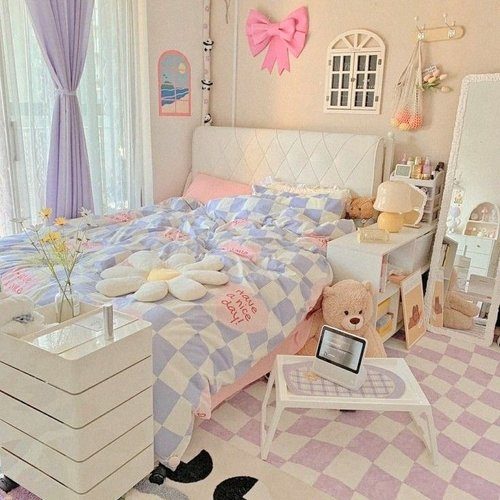
Korean bedroom design excels in creating clever storage solutions that maintain the room’s clean lines and minimalist aesthetic. Built-in wardrobes and hidden storage compartments are common features, often incorporating traditional Korean design elements in their construction or finishing details.
These storage solutions extend to multifunctional furniture pieces that serve both practical and aesthetic purposes. From platform beds with integrated drawers to decorative chests that double as seating, each piece is chosen for its ability to contribute to both the room’s functionality and its visual harmony.
11. Healing and Wellness Elements
Korean bedrooms often incorporate elements that promote physical and mental well-being. This might include space for yoga or meditation, aromatherapy diffusers, or traditional Korean wellness items. The arrangement of furniture and accessories takes into account principles of good energy flow, similar to the Korean concept of gi.
These wellness elements are integrated subtly into the room’s design, creating designated areas for relaxation and self-care while maintaining the overall aesthetic. The result is a space that nurtures both body and mind, promoting restful sleep and general well-being.
12. Seasonal Adaptability
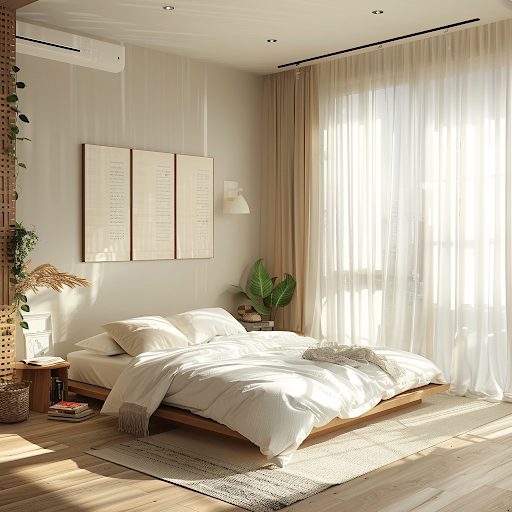
Korean bedroom design often includes elements that can be easily adapted to different seasons. This might involve changeable textiles, adjustable lighting solutions, or moveable furniture arrangements that can be modified to suit different times of the year. This flexibility allows the space to remain comfortable and functional year-round.
The seasonal adaptability extends to decorative elements as well, with easily changeable artwork or accessories that can reflect the changing seasons while maintaining the room’s core design principles.
Conclusion
Korean bedroom design offers a sophisticated approach to creating spaces that are both beautiful and functional. These 12 ideas demonstrate how traditional Korean elements can be seamlessly integrated with modern design principles to create bedrooms that promote rest, relaxation, and spiritual well-being.
By incorporating these elements thoughtfully, you can create a personal sanctuary that honors Korean design traditions while meeting contemporary lifestyle needs.
Whether you choose to implement all these ideas or select a few that resonate with your style, the result will be a harmonious space that promotes peace and tranquility while maintaining aesthetic excellence.

